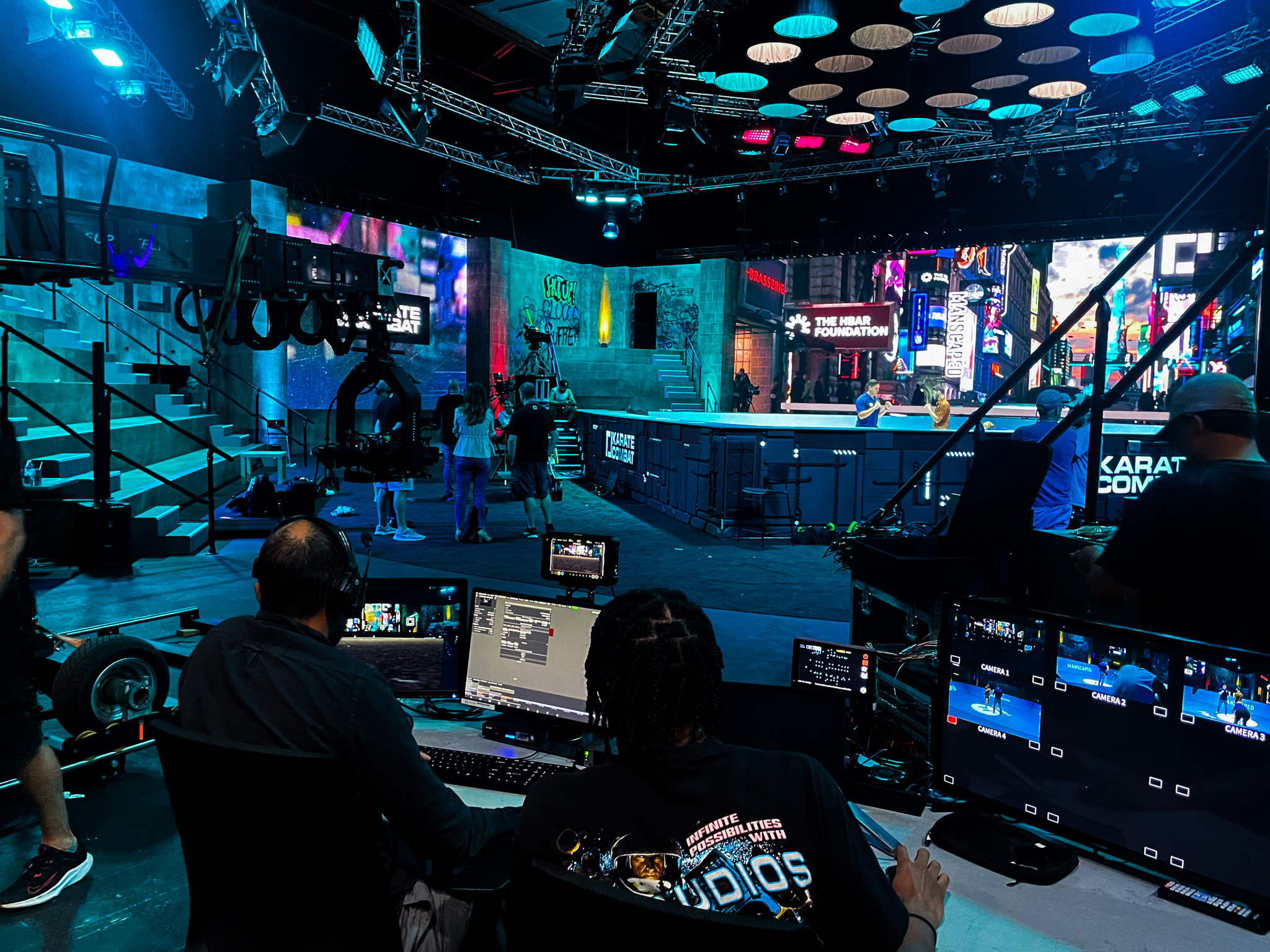The AI Newsroom is Closer Than You Think
From metadata to camera tracking, AI is changing our broadcasts

Over the last four years, AI has become a hot topic in just about every industry - and the broadcast industry is no exception. Already, broadcasters are taking advantage of the numerous ways AI can make their day-to-day lives easier.
It’s far too early to know where AI will ultimately take us, but below are the main ways I believe news streams could soon be automated—letting AI search for, build, and even write stories complete with graphics.
1. Writing Your Stories
AI presents a wealth of opportunities to tell compelling stories in broadcast. Take, for example, sports productions, which are now as much about entertainment as coverage of a game. Pre and post-game segments now provide entertaining analysis with augmented replays, graphics, and recreations.
News broadcasting could utilize AI for similar ends, taking footage and generating news stories that provide deeper analysis. Think of it as the ‘gamification’ of broadcasting. As video games start to look more real, coverage of real-world events becomes more visually akin to a game, with the same real-time technology powering things on both sides.
For reporters, this might seem like a bad thing. But it doesn’t have to be. Cost is one of the biggest challenges currently facing news broadcasters. News channels will find it more cost-effective to show commentary rather than in-depth reporting. That’s largely due to the cost of news gathering and outsourcing content. With AI, we could see those costs dramatically reduce, making it viable for big and small networks to do more news gathering and dive deeper into stories.
If AI can make news broadcasting an even more lucrative endeavor, then we’re bound to see more flexibility in the stories being reported. Combine this with new visual possibilities and news broadcasts could become as entertaining as most sports coverage is.
2. Creating Graphics and Videos
Finding the right imagery for a news broadcast can be difficult. For many, AI is already making it simpler by automatically generating metadata for videos and imagery from external content creators. Huge U.S. broadcasters like CNN and News Corp have entire centers to house their incoming content feeds. Now, AI tools can automatically assign data that makes the content easy for producers and journalists to find.
When your news comes from a variety of online sources, you are much more likely to be a victim of misinformation."
Of course, you don’t always already have what you need in-house. For many broadcasters, that means spending hours purchasing stock footage or tasking staff with creating what’s needed. With generative AI platforms, this time-wasting process could soon be a thing of the past. Instead of creating imagery and infographics from scratch, you could simply type a few prompts and allow the AI to create the art, virtual background, or infographic you need in seconds.
AI could even generate video footage for you, including animations. So say you need to explain a vaccination to viewers. AI can help you animate an explainer as quickly and cost-effectively as possible, so that your viewers can get all the information they need without needing to go to other sources.
3. Simplifying workflows
AI can also help reduce the need for manual tasks such as tagging ingested video. Most broadcasters have MAM (Media Asset Management) systems which ingest video from 50-200 sources daily. Today, this process requires for the most part manual tagging of the video with metadata. AI is now capable of tagging, creating that metadata automatically, identifying people and objects in the video and identifying copyright and trademarks in the video.
Once the video is ingested, a journalist needs to find what is relevant to the story, make a rough edit and add it to their newsroom system or send it to an edit bay for the editor to put together the package edit for that story using Adobe Premiere or Final Cut. All that can and is being automated by AI.
4. AI Could Help Fight Misinformation
Younger audiences aren’t watching TV. It’s a fact that the broadcast industry has come to terms with. Instead, they get all the news they need from social media platforms and video-sharing sites like TikTok and YouTube.
That, however, could be dangerous. When your news comes from a variety of online sources, you are much more likely to be a victim of misinformation. Using AI could help to make this a thing of the past by helping more reliable broadcasters to attract younger audiences.
We’re already starting to see broadcasters use AI to help ‘gamify’ output to try and capture this younger audience. For instance, AI is helping broadcasters automatically track on-set talent movements without any wearables. That helps to realistically place them in virtual worlds and paves the way for movement-triggered effects, letting talent point to a location to see a virtual player appear, for instance. With AI-driven graphics and effects, traditional news broadcasts could become even more interesting for a younger demographic.
In the future, I also hope that AI will help us reliably validate the sources of any story, and identify any copyright or trademarks involved. That will mean anyone can still do their own research, while also trusting AI to help them ensure all sources are legitimate.
New Capabilities Are Coming
AI is constantly evolving. With huge companies like Google and NVIDIA putting money behind AI, it’s hard not to see it as the next big commercial technology, and that means new developments will come thick and fast. The more competition there is between AI platforms, the more adoption there will be, which in turn leads to innovation. Of course, the buzz will also lead to imitation and a lot of companies will latch on to the AI bandwagon without creating any value for consumers.
In news broadcasting, I believe AI’s true value will make costly or time-consuming processes easier. For instance, the holy grail of virtual production for news broadcasters is AI which can key out talent without the use of green screens. It may be five to ten years away, but a software-driven solution that tracks talent and cameras without encoders will revolutionize the production process.
Is AI a Threat?
Anyone in the broadcast industry that sees AI as an imminent threat to their livelihood should start seeing it as an opportunity to try something new. I believe AI will be the biggest shake-up in news broadcasting since the 24-hour news cycle became viable. It will completely reshape the industry.
News organizations should be exploring how AI can help staff, optimize costs, reach new audiences and give them an edge over competitors. Organizations who start exploring the possibilities will soon be leagues ahead.
Get the TV Tech Newsletter
The professional video industry's #1 source for news, trends and product and tech information. Sign up below.
Grigory Mindlin is General Manager of Broadcast at disguise.

